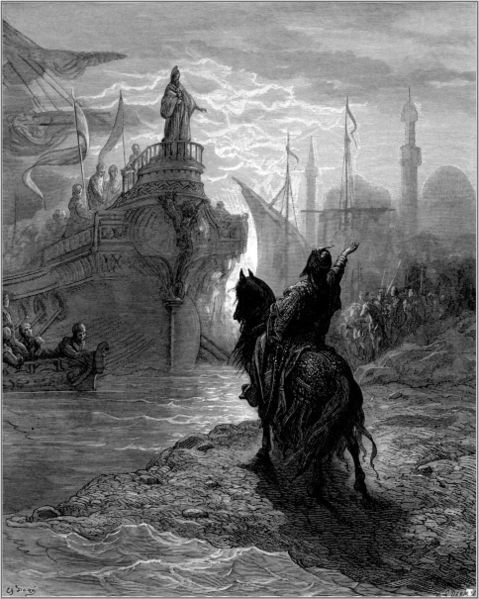Alexios V Doukas, Latinized as Alexius V Ducas, was Byzantine emperor from February to April 1204, just prior to the sack of Constantinople by the participants of the Fourth Crusade. His family name was Doukas, but he was also known by the nickname Mourtzouphlos or Murtzuphlus (Μούρτζουφλος), referring to either bushy, overhanging eyebrows or a sullen, gloomy character. He achieved power through a palace coup, killing his predecessors in the process. Though he made vigorous attempts to defend Constantinople from the crusader army, his military efforts proved ineffective. His actions won the support of the mass of the populace, but he alienated the elite of the city. Following the fall, sack, and occupation of the city, Alexios V was blinded by his father-in-law, the ex-emperor Alexios III, and later executed by the new Latin regime. He was the last Byzantine emperor to rule in Constantinople until the Byzantine recapture of Constantinople in 1261.

Miniature from a 13th-century chronicle of Niketas Choniates.
The siege of Constantinople in 1204, by Palma il Giovane
Alexios V negotiating with Doge Enrico Dandolo, by Gustave Doré
The sack of Constantinople occurred in April 1204 and marked the culmination of the Fourth Crusade. Crusader armies captured, looted, and destroyed parts of Constantinople, then the capital of the Byzantine Empire. After the capture of the city, the Latin Empire was established and Baldwin of Flanders was crowned Emperor Baldwin I of Constantinople in the Hagia Sophia.
Venetian mosaic in the San Giovanni Evangelista depicting the fall of Constantinople, 1213
The siege of Constantinople in 1204, by Palma il Giovane
The original Horses of Saint Mark displayed inside St Mark's Basilica in Venice; replicas adorn the outside.





